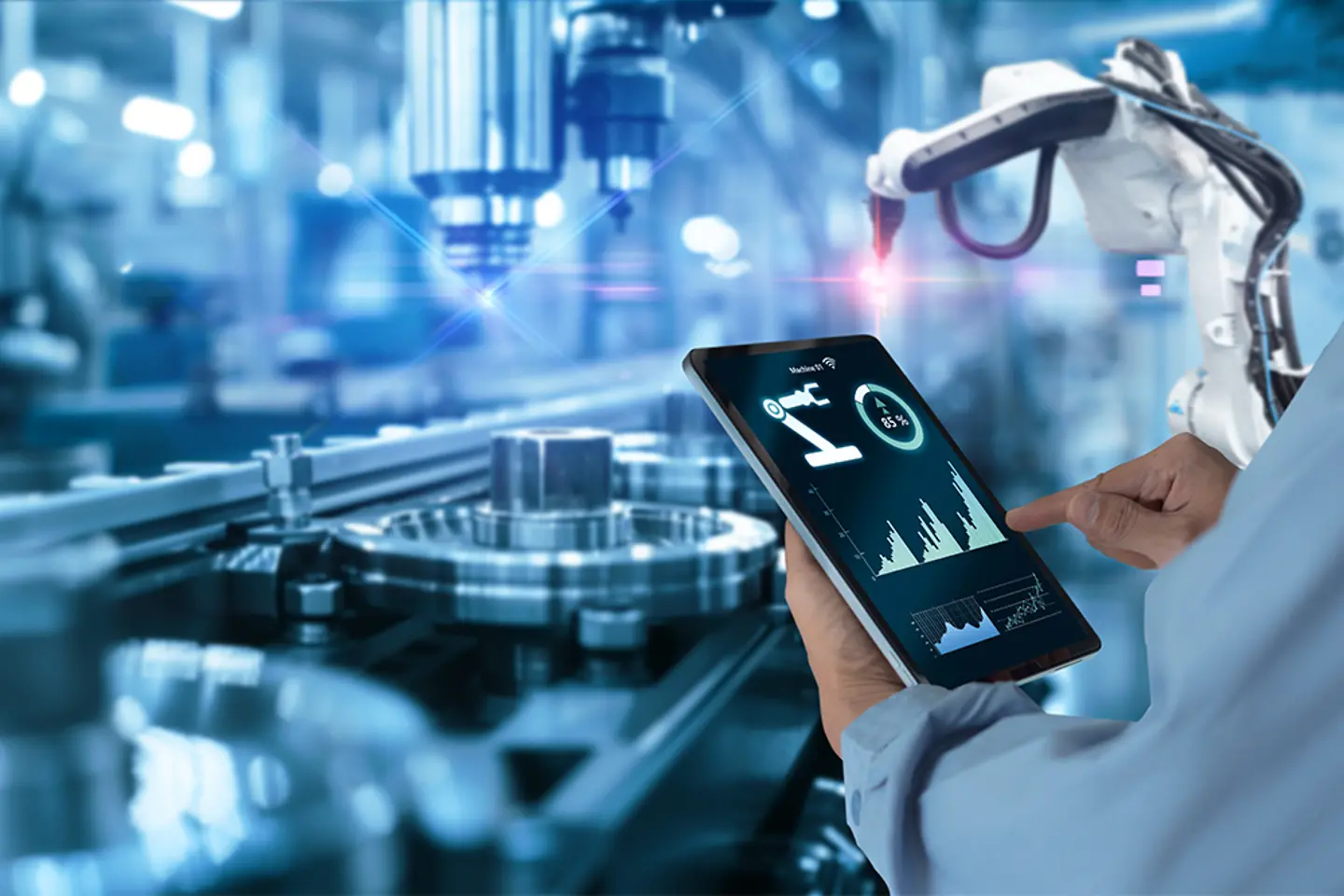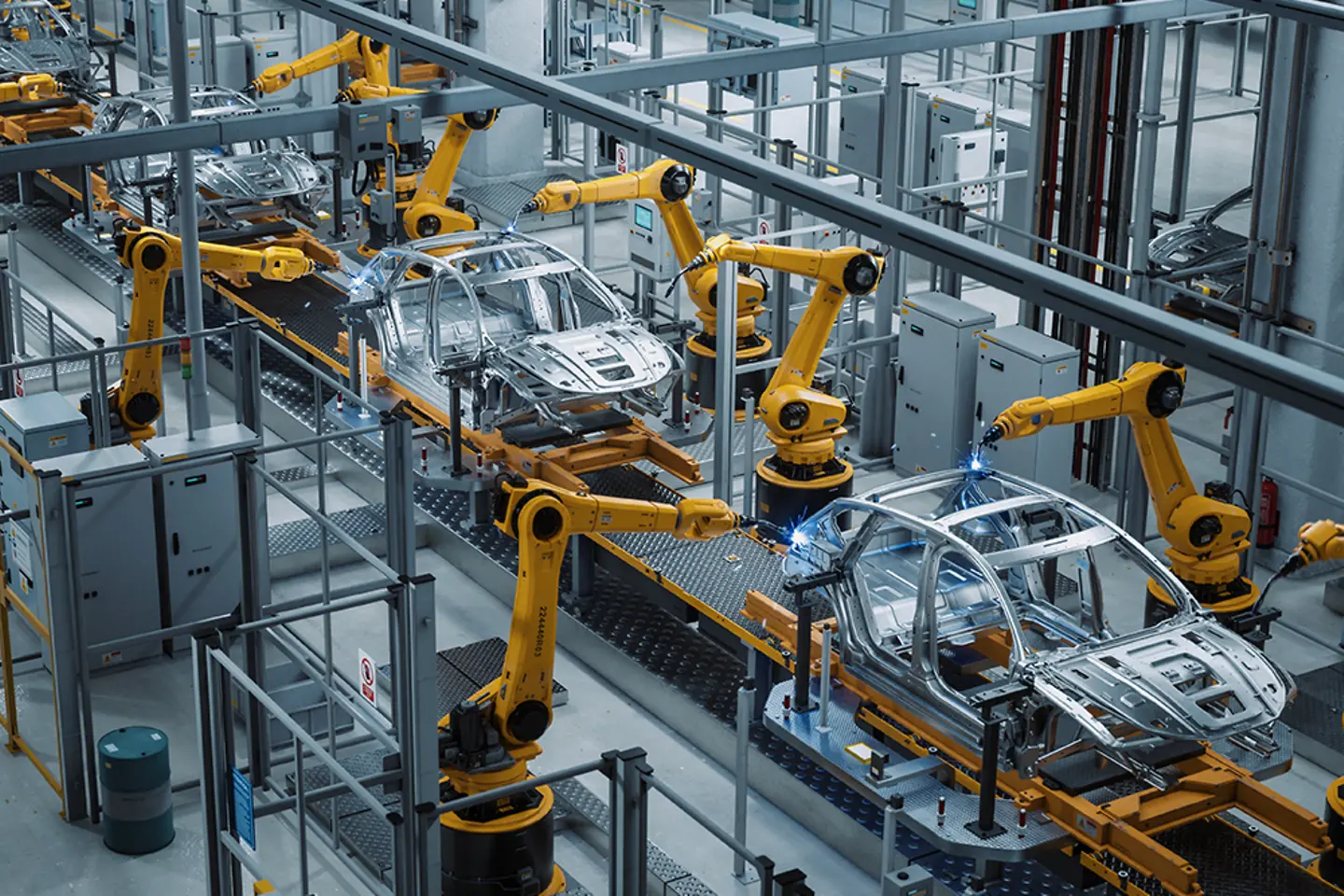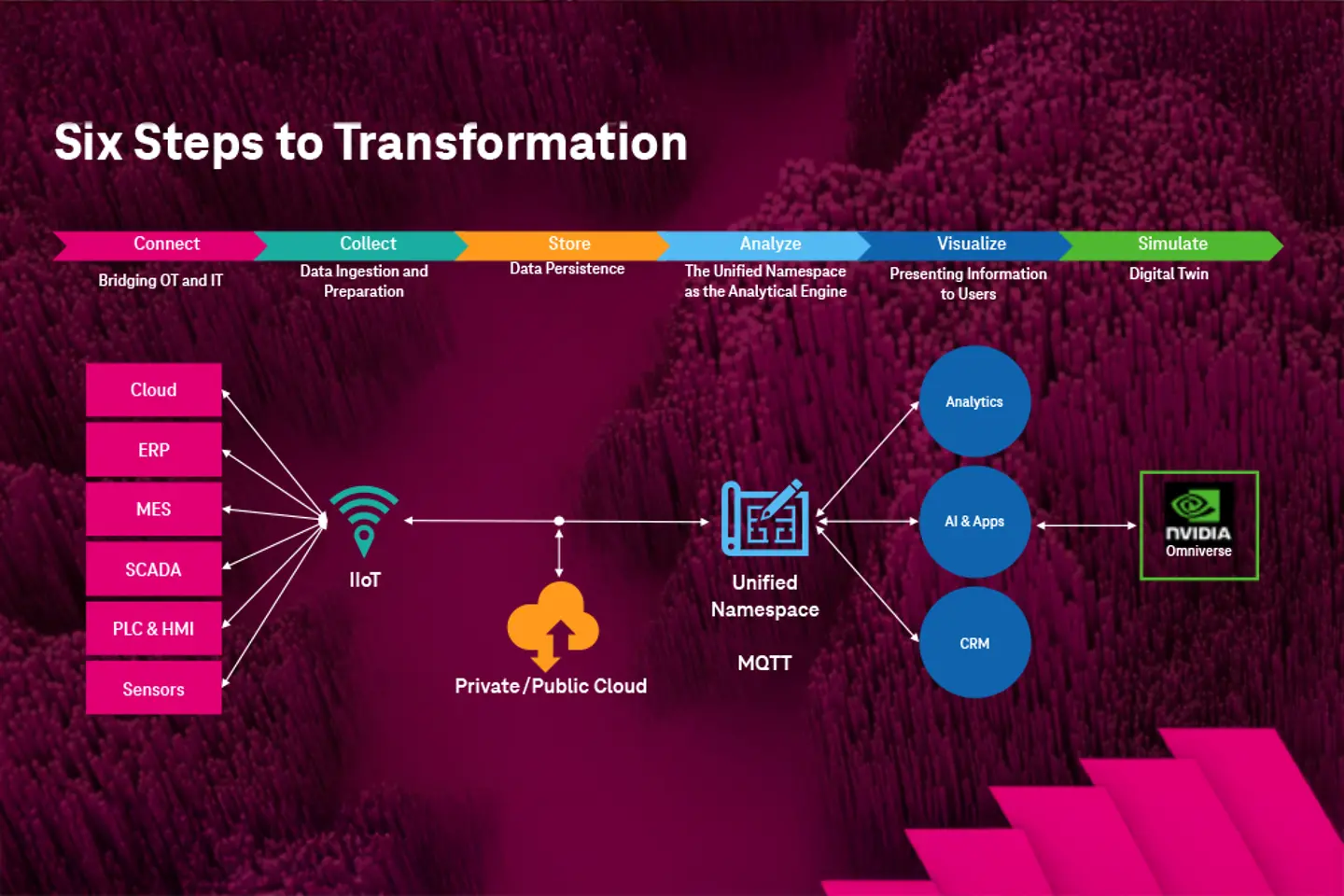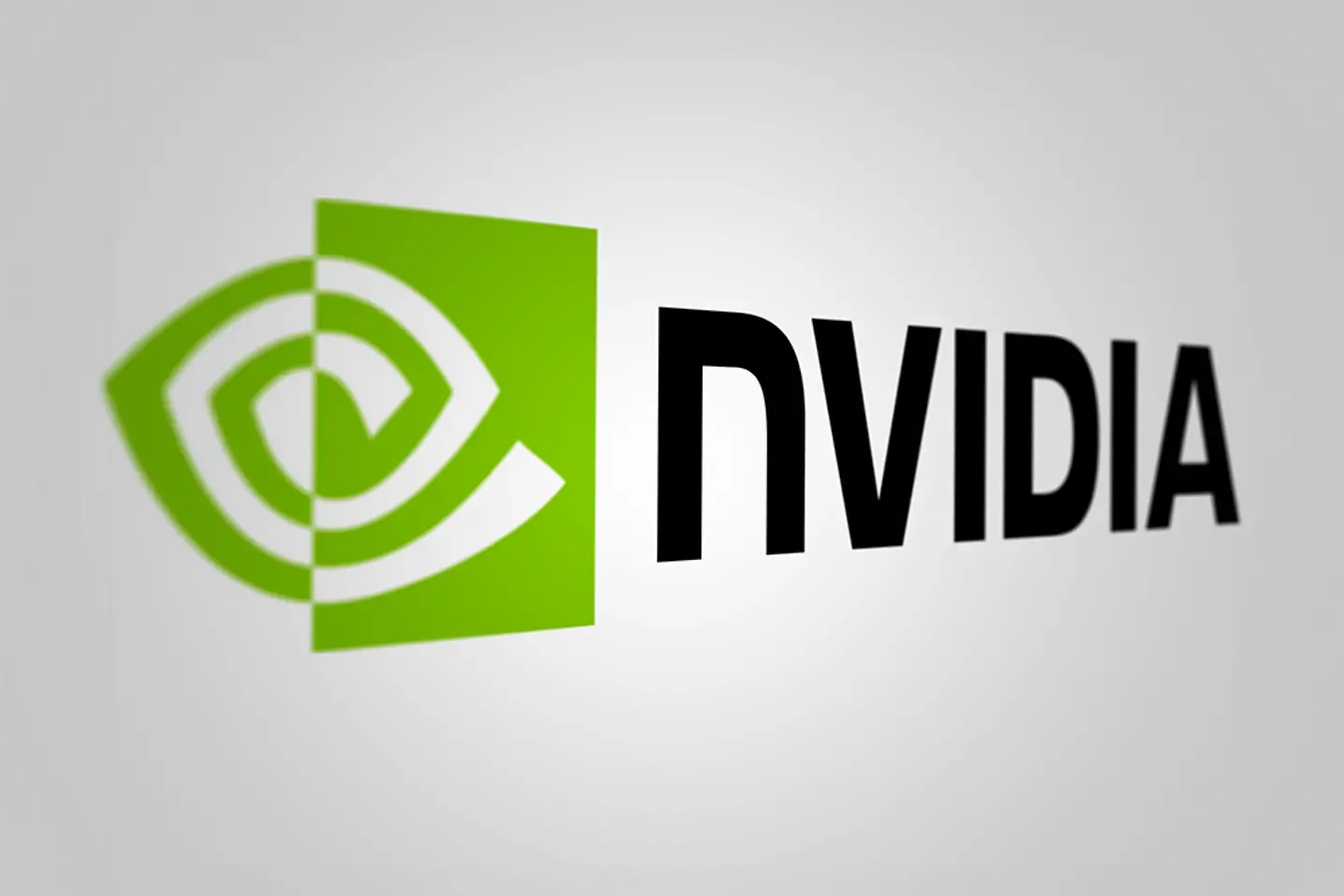
Over the past decade the global manufacturing industry has increasingly invested in digitalizing their operations despite economic uncertainty, rising costs, and a challenging business climate. Technology investments made by manufacturing companies accounted for 30% of their operating budget in 2024, with cloud, Generative AI, and 5G being the top three technologies with the greatest ROI1.
According to Deloitte2, investments in digital technologies toward smart operations, meaning investing in their digital core and data, will likely continue in 2025. This is based on the need to address elevated material and labor costs, an ongoing skills gap, and potential disruptions from geopolitical factors.

What we are seeing in T-Systems is an increasing interest in adopting the concept of Industrial Metaverse. By connecting existing systems in the factory and IT landscape onto one platform, which allows data to be exchanged between the systems and the virtual platform, it builds an eco-system of digital twins, which enables manufacturers to simulate business processes in real time. By connecting more than 40 systems into NVIDIA’s Omniverse, BMW can virtually plan new factories and their processes before construction begins3. This ensures the car manufacturer has created a blueprint that is tested and verified to work. According to BMW, they are saving 30% on their operational costs for factory planning.
While this sounds very promising, the road to being able to simulate your business is not so straightforward. Above all, it requires meaningful data, which means manufacturers must overcome the IT/OT convergence challenge. When we talk to manufacturers, they are inspired by the endless possibilities of the Industrial Metaverse. Still, most are not at a stage where they can immediately start a proof of concept on a specific use case. To provide just a few examples, Zebra Technologies found in a recent study that 79% of European factory workers still rely on paper-based documentation, and only 15% of European manufacturers have real-time production visibility4. It depicts the digital maturity level among manufacturers, which varies significantly.

If you manage a factory or warehouse today, you know the challenge: getting your physical equipment and digital systems to work together effectively. You need to turn isolated machines, aging infrastructure, and separate processes into a system that runs smoothly, provides real insights, and helps you make smarter decisions. Making this connection isn't just a nice-to-have; it's crucial for staying efficient, resilient, and competitive. But where do you start, and how do you make sure it works?
What I've noticed over the years is that many manufacturers struggle with the same problem: they achieve small wins in isolated areas but can't spread those improvements across their entire operation. A machine runs better here, a process improves there - but the big picture doesn't change. This happens because the foundation - especially the connections between systems wasn't built with scale in mind.
Too many companies run isolated "proof of concepts" that work in labs but weren't designed to expand. They end up forgotten, experiments that didn't integrate with the bigger picture. When your network and connections are designed for scale from the beginning, you can essentially "copy and paste" successful improvements across your entire enterprise, no matter where the data is collected. Your initial project must establish the foundational architecture that can be easily expanded across other machines, lines, and even facilities later. Think big, start small, but build for scale from day one.
This guide lays out six clear steps that have proven successful across different industries. Think of it as a reliable roadmap to tackle common problems and get real results.
#1 - Connect
The Connect phase links the factory floor with the IT organization. It's where we link up all equipment and systems, including sensors, machines, control panels, and, importantly, production tracking (MES) and company planning (ERP) software. These act as bridges between shop-floor operations and the business. "Translator" services like SmartUnifier convert different machine data formats into a common language. Connect sets up the data pathways so all crucial information is ready to flow.
#2 - Collect
After creating data pathways in the Connect phase, the Collect phase focuses on collecting and preparing the raw data generated by connected devices and systems. This critical function within the Industrial Internet of Things (IIoT) ensures data quality and readiness for downstream analysis. The phase leverages the MQTT protocol for efficient data transport and uses robust preprocessing techniques.
#3 - Store
The Store phase isn't simply a step that happens before analysis. Your infrastructure strategy must enable a continuous data exchange between the IIoT and Analytics platforms cost effectively and ensure complete data sovereignty to protect your most valuable assets and intellectual property. Hence, an agile and secure infrastructure setup is needed to optimize the data exchange and often requires a hybrid setup where data are collected, stored, and aggregated locally before being sent to a sovereign cloud platform for further treatment.
#4 - Analyze
This is the phase where your data transforms into business intelligence. The Unified Namespace (UNS) is your operation's central nervous system – a single source of truth about what's happening across your entire enterprise in real time. It creates a structured view of your entire operation from enterprise level down to individual sensors, organizing information to mirror your actual business hierarchy. What makes this powerful is how information flows within this structure. Your equipment and systems both contribute data and consume it. This two-way flow creates remarkable opportunities. Because you've connected everything and ensured clean, standardized data, you can uncover hidden relationships that can drive operational improvements, optimize processes, and enable better decision-making.
#5 - Visualize
Turning data and insights into visual representations is a game-changer. Solutions like FactoryVIZ provide a real-time, 3D view of your shop floor, integrating location tracking and data from systems like MES, ERP, and IoT. It visually highlights bottlenecks and operational status, displaying current and past factory activity. In conjunction with a real-time localization service (RTLS) such as Omlox, goods and devices can be tracked, geofences can be drawn, and relevant live data can be displayed. In short, it's more than Tableau, because of its 3D and real-time capabilities, but it's less than NVIDIA Omniverse, because it lacks true simulation capabilities.
#6 – Simulate
Based on real-time synchronization with data stemming from your systems, the concept of Industrial Metaverse enables you to make photo-realistic simulations of your business processes. It’s a digital twin of your physical world. The NVIDIA Omniverse platform is extremely powerful and is particularly useful for complex scenarios where greater parts of your value chain are included. It could be planning new factories by making simulations of the shop floor or expanding existing shop floor designs to understand the impact in the warehouse and logistics.

The NVIDIA Omniverse might represent the most advanced level of becoming a Smart Factory and serves to many as a Northern Star of the endless digital opportunities to optimize your business.
However, one should be aware that many foundational building blocks must be in place before adhering to the simulation phase - just as clear use cases must be defined to ensure ROI.
So, the question is: Where are you on the six-step model?
The six-step model outlines the processes that must be mastered to become a smarter factory. However, for most manufacturers, the scenario is further complicated as they manage multiple factory sites, typically worldwide. Each factory setup is unique as machines, software, and processes are different from site to site and can thus be seen as its own isolated (data) environment. Acquisitions are a typical reason for the increased operational complexity. Incorporating this in any pilot projects across the six-step model is important. Your initiatives must be scalable and adaptable across factory sites to reap their full potential.
Concluding our six-step model, it is essential you think holistic on the architecture and acknowledge that becoming a smarter manufacturer is a journey done in steps.
Think big, start small, but build for scale from day one!
1 https://www.rockwellautomation.com/content/dam/rockwell-automation/documents/pdf/campaigns/state-of-smart-2024/9th-annual-state-of-smart-manufacturing-report-en.pdf
2 https://www2.deloitte.com/us/en/insights/industry/manufacturing/manufacturing-industry-outlook.html
3 https://www.t-systems.com/dk/en/insights/newsroom/expert-blogs/how-bmw-leverages-industrial-metaverse-1018168
4 https://www.themanufacturer.com/articles/the-benefits-of-digitisation-for-manufacturers-are-significant-so-whats-holding-so-many-back/